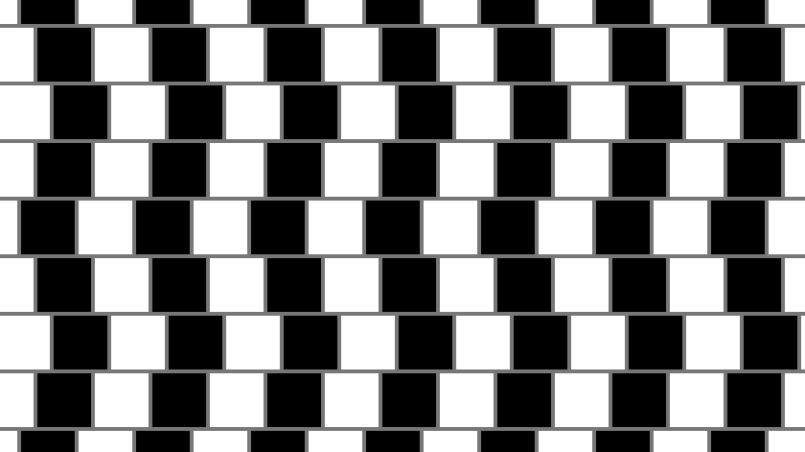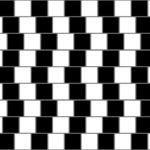Perception

Prior to even wondering whether any new information is given with manipulative or informative intent, we have to check our own tools. For this reason, we deviate relatively far from the actual topic today in order to understand an important prerequisite for the assessment of information: namely, that the human senses per se are quite unsuitable for evaluating situations neutrally. To attempt to do so nevertheless is a constant struggle with automatisms – a fact that one has to internalize in order to come closer to reality.
Fundamentals of perception
If we really want to proceed thoroughly, we must first ask ourselves an even more elementary question than that of the reliability of our perception, namely, do we even get input from outside at all?
Solipsism
We can not possibly say with certainty whether our perceptions coincide with reality or, indeed, have an external correspondence at all. Reduced to the only definitely compelling finding: I think, therefore, I am – we have to accept that the theoretical possibility exists that, even up to the nature of our own body, absolutely nothing that we perceive through our senses must necessarily be as it seems or must necessarily even exist at all.
This concept of the fictitious environment, however, is a mental impasse, which bears the lovely name solipsism. Thinking about it simply does not get us anywhere and is also not particularly healthy for the psyche; so we leave the argumentation chain and accept as an axiom (a basic assumption which can not be challenged) that the received stimuli actually come from outside and that there is more than just ourselves in existence.
Simulation
The same is true of the assumption that we might be part of a simulation; a model, which at least recognizes that the impressions come from the outside and there is thus some kind of actual environment, even if it may not coincide with the deception we experience. In no case, however, can we escape from this mental prison as long as no one intervenes from outside.
So here, too, we are in a mental impasse in the sense of: if it should be so, it makes little difference for our experience and we still have to act as if everything were real.
Constructivism
Even if our world is real, it is not exactly the way we see it. We can not perceive many color frequencies, do not have an echo sounder, and we keep experiencing that our senses can be deceived.
As fundamentally true as this statement already is, it is doubly so in modern times: we are distracted, irritated and tired of all the information. Our filters do not come to rest – and as we’ll see, we need and use them without interruption.
Almost every step on the way to the image in our consciousness distorts what was seen.
Light passes through the pupil, lens, and vitreous body of the eye, and falls on the retina as a small, inverted image of the environment. It is slightly distorted and clouded by the irregular properties of the lens and the glass body, and also slightly blurred and vaulted with the exception of a small area around our focal point. Now the first great transformation happens:
The real image is translated into a series of nerve impulses, and an initial, rough pre-interpretation takes place, to which end the visual cells follow simple laws. Lines and outlines are amplified by means of neighboring cells firing more intensely whenever they receive similar impulses. The nerve cells can also increase their sensitivity in order to compensate image defects by impurities or to adapt optimally to the available light. Because of the “inertia” of this adaptation, they often fire a little longer than the stimulus is there, thus creating after-images – a first indication that not everything we see actually has to be exactly as it appears to us.
The visual center – now we’re talking
The images encoded as electrical impulses, which, in turn are divided into light-dark contrast, two color channels (red green and blue/yellow), outlines and other emphases and prioritised information (such as movement, signal colors and the like) are carried into separate brain regions, where they are processed. They are then reassembled and amplified in our consciousness (in a way which we have not yet fully understood), so that the result is an effortlessly processable picture, optimized for our understanding.
Additions and selection
Even before the image can really penetrate our consciousness, a lightning-fast addition, pre-selection and interpretation of the stimuli occurs, again largely according to learned probability patterns. The blind spot (where the optic nerve opens, the retina has a recess) is filled, contour lines are further supplemented and smoothed, forms are pre-interpreted.
The brain fills out places we have not yet looked at (we remember, in fact, we only see really clearly on the focus point) with a continuation of the surrounding pattern or even a thing that we expect at this point. Since this deception is done by our brain, tailor-made for itself, we do not notice it.
And because of this, it can happen that we see something familiar – with all expected detail – from the corner of the eye, although it was not really there – or why we sometimes find small objects in a place where we have already looked three times … Our focus has simply never wandered directly over the object, and the brain has over-interpreted in one case, and painted over the object in the other.
Automatic optimization
What goes on is not just supplementation, but also great simplification. Unimportant information does not reach our consciousness, which is indeed necessary, in order to avoid overstraining and to facilitate quick decisions. The brain – and, to a lesser extent, the retina cells before it – filters and supplements on the principle: “Probably correct”.
Therefore, we complete outlines, which are actually broken and simplify things to keep the conscious computing power as low as possible.
Optical illusions
Optical illusions are the first indication that ever made us think that nature (the actual environment) can differ from our perception (of it). Some of them play with learned expectations and do not work in other cultures, some focus on our pattern recognition, others on the persistance of vision and some on other peculiarities of our stimulus processing.
Subconscious censorship
Sometimes the part of our mind that tries to protect us from horrifying knowledge (an ally, which unfortunately can also be used against us) decides that something painful or not appropriate in the concept had better not be perceived.
In this way, people can actually overlook the most obvious things (of course, they can also fail to hear or otherwise perceive). There are numerous documented cases of such selective blindness. Here, we are already working fully in the expectation and experience mode, unconsciously, but connected with cognitive performance. The brain interpreted the impulse as an error or as unacceptable for the psyche.
Here is the next threshold – the interpretation of the images
Perception, as we have seen, is much more complicated than the “cartesian theater,” the inner canvas, which was imagined before. Countless sequences are synchronized and only give the impression of a collected, undivided perception. What arrives in our consciousness has already gone through numerous filters and has been partially altered. Even while something is happening, our eyes might deceive us.
Yet another step of abstraction, however, occurs when we store what we’ve seen, and yet another, whenever we recall it later. New experiences that we have meanwhile made literally make the memories appear in a new light and can sometimes add so much in the saved image that it is completely altered.
Let us end the excursus into our perception’s oddities which are so useful for survival, and yet often so obstructive for real understanding, with the conclusion that we can not even fully trust ourselves in the search for the best possible world view. (For the same reason, testimonies are often the worst means of reconstructing events – precisely because, in all innocence, people frequently remember what has transpired completely wrongly.) The eyes are only a representative example of an important truth; to be 100% sure of anything at all is a confidence misplaced. The possibility of a fundamental error should always be taken into account when taking actions, and then the decision should be made as to whether the possible damage is worth the benefit.
Credits
| Image | Title | Author | License |
|---|---|---|---|
 |
Café_wall | Café wall illusion | CC BY-SA 3.0 |
